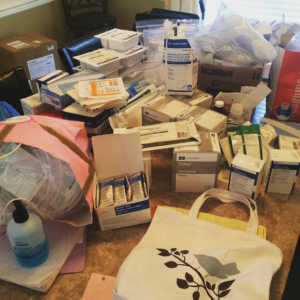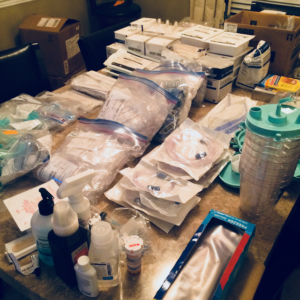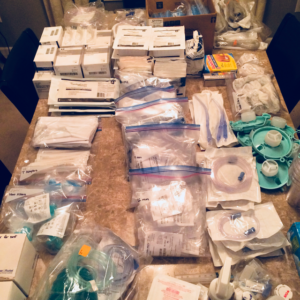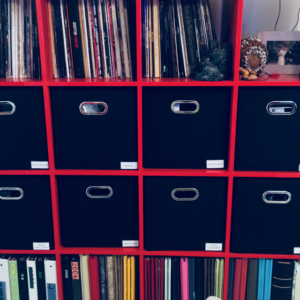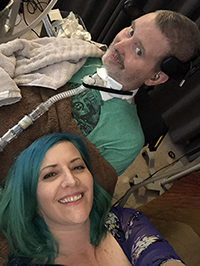ALS robs a person of the ability to walk, to eat, to speak and eventually to breathe. As with every loss of function, a decision must be made for how to handle that loss. When a person with ALS can no longer walk, a decision is made about a wheelchair. When a person with ALS can no longer eat enough food on their own, a decision is made about a feeding tube. And when a person with ALS can no longer breathe on their own, a decision must be made about a tracheostomy.
Tracheostomy, or tracheotomy, is a surgical procedure which consists of making an incision on the front of the neck and opening a direct airway through an incision in the trachea. A hose is connected from the trachea to a ventilator, which is a breathing machine. The decision is a very personal one. Being on a ventilator is a different way of life. To put it simply, it is being on life support, though many patients and families prefer other terms such as assistive device or breathing machine.
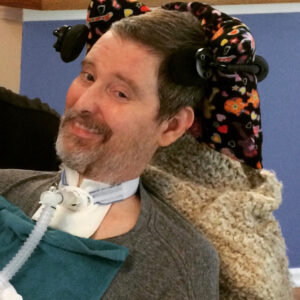
Adapting to it is a challenge but can certainly be done. A trach (prounounced TRAKE) is more common than one might think. Even many young children have them, as we learned from the respiratory staff at the hospital where Brian had his trach placed. A trach requires daily care and suctioning and there are a few machines that assist in keeping the airway clean.
Living with a trach on a ventilator typically consists of the following equipment:
Trach
Ventilator
Cough Assist
Suction Machine
Accessories
TRACH
As ALS progresses your breathing will be monitored. At some point as lung muscle function deteriorates a decision is made to have a trach placed. The surgical procedure itself is straightforward and simple. It will require at least an overnight stay. Continue to have open and honest conversations with your doctor about how your breathing is feeling. Brian went too long and just couldn’t breathe on his own one day. Luckily paramedics arrived in time to revive him. A trach should be placed before an emergency happens. If not, it could be too late.
There are a few different types of trachs. We’ll break it down with what we have but for the most part they function the same.
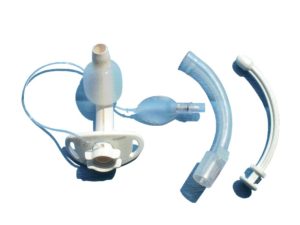
The trach consists of a tube with a cuff and a cannula. The tube is the main part of the hardware and it’s held secure with a collar that attaches to it. The cannula is the curved tube shown above. It goes into the tube. Some cannulas are reusable and some are disposable. The collar and cannula are replaced and/or cleaned regularly. The cannula gets clogged often and requires suctioning.
VENTILATOR


A ventilator is a machine designed to move breathable air into and out of the lungs, to provide breathing for a patient who is physically unable to breathe, or breathing insufficiently. Once the ventilator is set up the first time it does not require much more than to be plugged in. Settings will get changed from time to time but for the most part it stays the same.
There are a few different types of ventilators.The ventilator shown above is a Philips Trilogy 100. It requires power and will usually be plugged into a wall. It does have backup battery power which lasts around three to four hours. Ask your respiratory company for a backup ventilator. It’s also a good idea to get a generator in case you lose power.
COUGH ASSIST
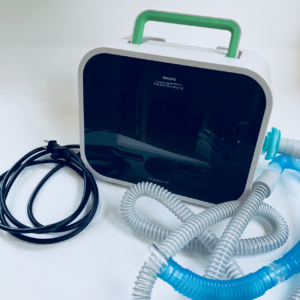
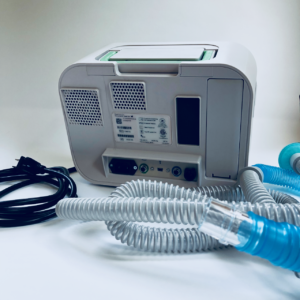
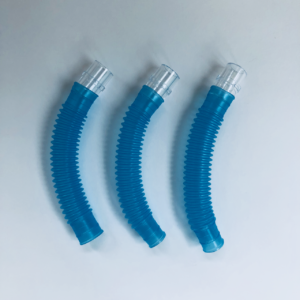
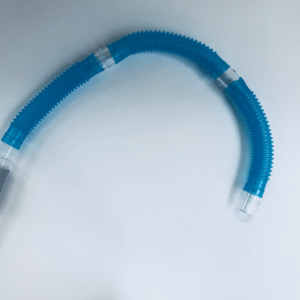
The Cough Assist Machine helps to clear secretions from the lungs by helping with deep breaths in and out. This machine lives up to its name. It assists the patient with getting a good cough and therefore getting the secretions out of the airway. Think about when you have a cold and you cough up the phlegm from your chest. The cough assist machine helps by forcing more air into and out of the lungs than the patient could do themselves. It gives them a good cough to clear the airway. The machine shown above is a Philips Respironics CoughAssist T70. This machine is good to get larger chunks of mucus out of the trach.
SUCTION MACHINE
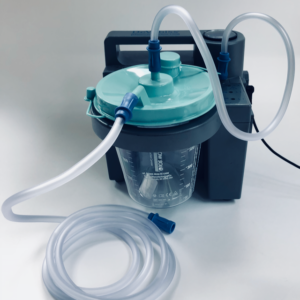
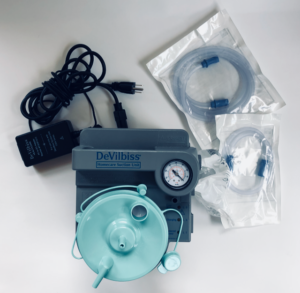

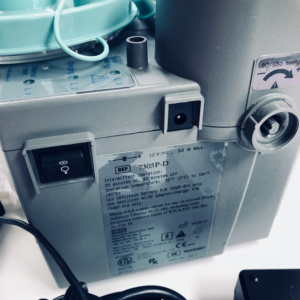
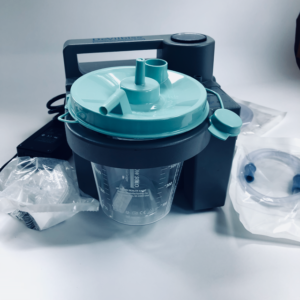
Suction may be used to clear the airway of saliva or other secretions so that a patient may breathe. Suctioning can prevent pulmonary aspiration, which can lead to lung infections. The machine shown here is a DeVilbiss 7305 Homecare Suction Unit.
Typically a suction catheter is used with a suction machine. A small tube gets inserted down into the cannula of the trach to suction secretions out.
Suction catheter kits. A monthly supply is 150 kits. They get used.
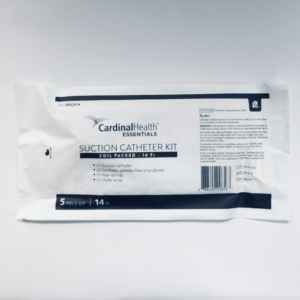
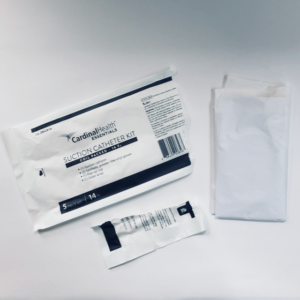
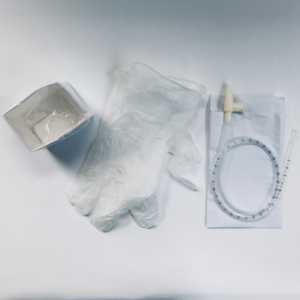
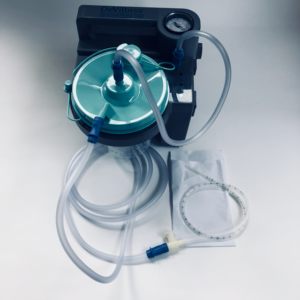
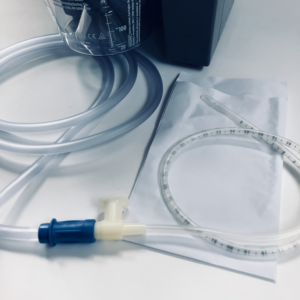
ACCESSORIES
All three of the machines have accessories, hoses and tubing that go with them. Before getting a trach, find a place in your home where you can organize and store supplies. Coming home from the hospital is already scary, then a giant box of different medical supplies arrives. It can be overwhelming. Just know that space will be needed to organize the supplies in the right way. Items need to be accessed quickly and good organization helps.
